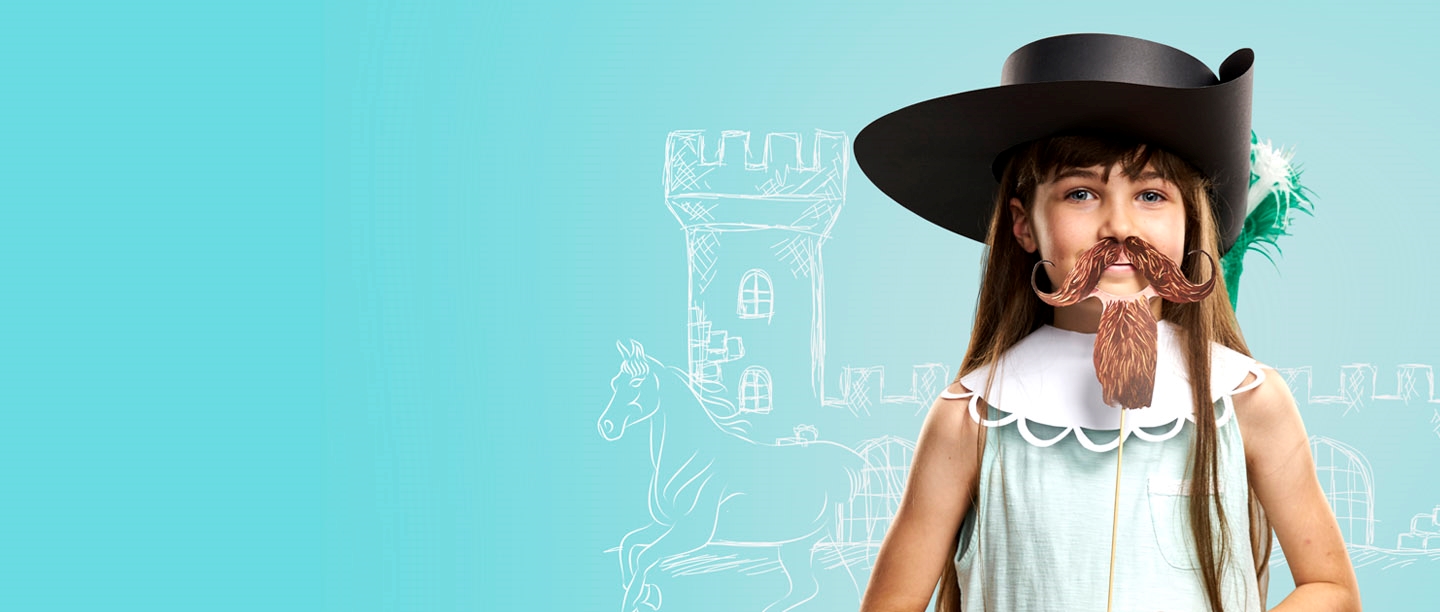Tudor Merchants’ Hat
In cold weather it’s easy to pop on a woolly hat or beanie to keep warm. But you might be surprised to find out that it was the Tudors who first invented this winter favourite! In Tudor England, wool was very important for making clothes. People could make money selling wool from their sheep, and high quality wool could be more expensive than silk! Tudor merchants proudly wore hats made from the wool that had made them rich.
Feathered Cavalier Hat
In Stuart England, rich people enjoyed fancy new fashions, influenced by the extravagant French court. A key part of this look was wearing a fancy hat. Rich cavaliers (supporters of the royal family during the English Civil War) wore wide-brimmed hats made from felt, which were often pinned up on one side and decorated with enormous ostrich feathers.
The Turban
Like today, in the past, Turbans had cultural and religious links. They became popular in England thanks to the Ottoman Empire, which ruled over the east of the Mediterranean, including what is now Greece and Turkey. The Ottoman court was known for its magnificence, with imperial kaftans and majestic turbans. Head wear was an important way to show class, gender, and status.
Lady Mary Wortley Montagu, a writer and poet who was married to the British ambassador to Turkey, brought her favourite Turkish clothes – including the turban - home with her in the 18th century. She was adding to a growing trend for dressing ‘a la Turque’, a favourite style for fashionable ladies and masquerade costumes. Dido Elizabeth Belle, who grew up at Kenwood, can be seen wearing one such fashionable turban in this famous painting from the 1770s.
Bergère Straw Hats
Elegant Georgian ladies wore straw shepherdess or milkmaid hats, made in a French style called bergère. Marie Antoinette (a queen of France) wore a bergère style hat in a portrait painted in 1783. She loved to dress as a shepherdess, and her straw hat was a key part of this look. These hats represented an idealised view of countryside life, which was very fashionable in Georgian England.
These straw hats were very popular, so when the Napoleonic Wars between England and France cut off straw supplies, Luton in Bedfordshire became a new centre of straw hat making. There is still a straw hat and a wheat sheaf on the Luton Town Football Club crest today as a legacy of the Georgian hat makers.
Bowler Hats
Lock & Co. Hatters in London claim that they invented the first bowler hat for a man called Edward Coke. He wanted hats for the gamekeepers who worked on his estate on Norfolk, and they needed to be as tough as the men wearing them! In the 20th century, bowler hats were made iconic by Charlie Chaplin, a famous comedy actor in early black and white silent films.
Edwardian Hats and the Suffragettes
By the start of the 20th century, mass production meant that hats were cheaper and more more available for everyone to buy and wear. At this time, women were becoming more involved in politics, but still couldn’t vote in elections. In 1903, Emmeline Pankhurst and her daughter Christabel founded the Women’s Social and Political Union, to fight for women’s rights, including the right to vote. Their opponents tried to make them unpopular by saying they looked and dressed like men. There was still a big difference between how men and women dressed, so to prove their opponents wrong, suffragettes wore extra-large hats which could be decorated with flowers, lace, ribbons, bows, feathers artificial fruit and even whole stuffed birds!
Eventually in 1918, after the end of the First World War, women over 30 were finally allowed to vote. Hats off to that!
How to enter
Once you’ve made your hat, ask an adult to take a photograph of it – or of you wearing it! Send it to us at Members.Competition@english-heritage.org.uk with your full name and age, and your parent’s name and membership number.
Please make sure you have your parent or guardian’s permission to enter and check the terms and conditions below. Entries must be in by midnight on Sunday 6 September 2020. Good luck!
Enter nowTerms and Conditions
This article and competition has been adapted for Kids Rule! from 'History's Most Iconic Hats' by Fashion Historian and host of our History Inspired Makeup Tutorials Amber Butchart. You can read the full original article here.
